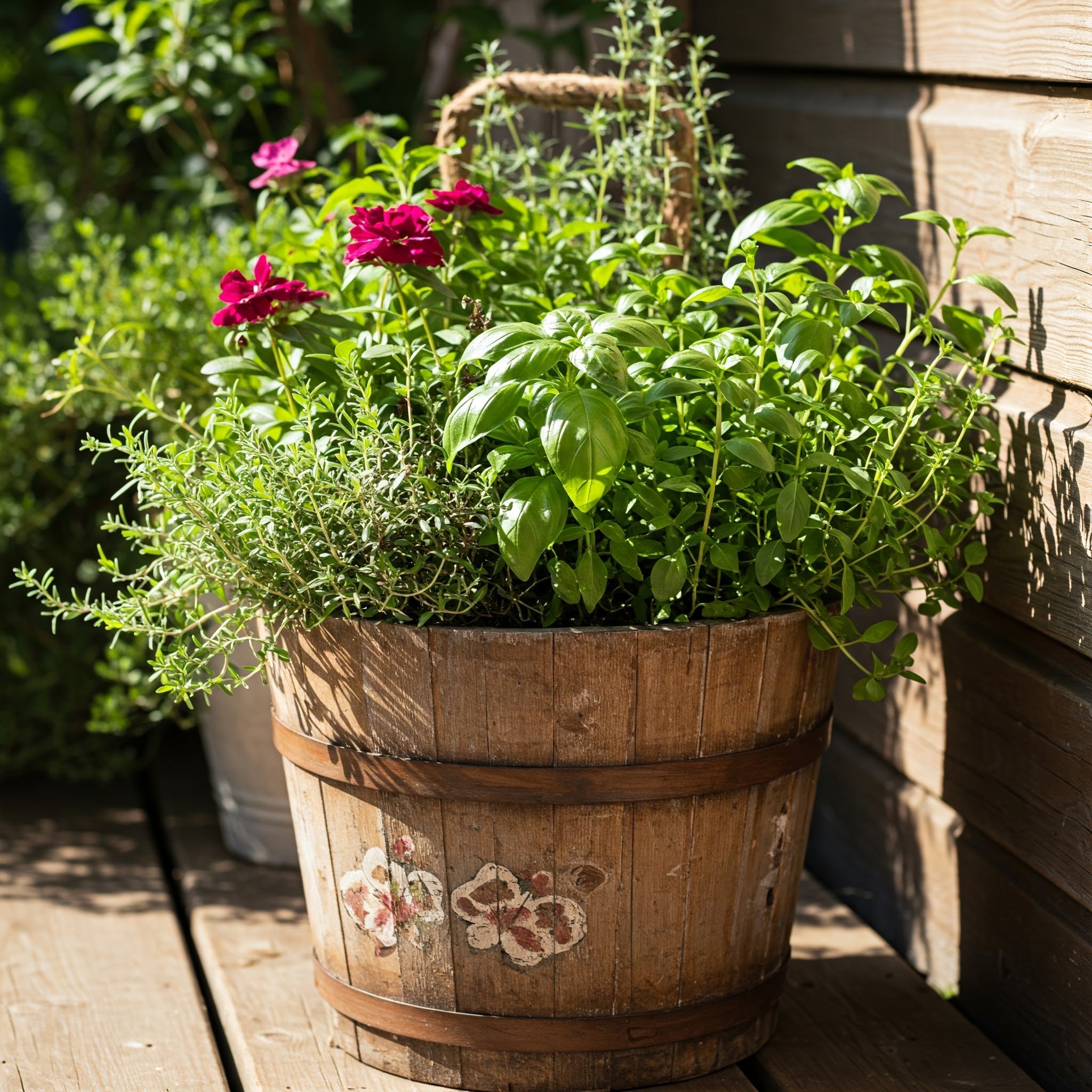When Is the Right Time to Plant Sweet Potatoes?
Discover the optimal timing for planting sweet potatoes in your garden! This guide covers everything from ideal conditions to planting tips, ensuring a bountiful harvest of this delicious root vegetable.
Ah, sweet potatoes! Those delightful, sweet, and nutritious tubers that make everything from casseroles to fries. If you’re itching to dig your hands into the soil and grow your own sweet potatoes, you’re in for a treat. But before you rush out to plant them, you might be wondering, “When is the right time to plant sweet potatoes?” Timing is everything in gardening, and knowing when to plant can make the difference between a bountiful harvest and a dismal crop.
In this article, we'll dive into the ins and outs of sweet potato planting. From understanding the ideal conditions to tips for care and maintenance, we’ll ensure you’re fully equipped to get those sweet potatoes growing. So, roll up your sleeves, grab your gardening gloves, and let’s get started!
1. Understanding Sweet Potatoes
Before diving into the nitty-gritty of when to plant, let’s explore what sweet potatoes are and why they’re a fantastic addition to your garden. These nutrient-rich root vegetables are easy to grow, drought-tolerant, and offer a delicious harvest, making them a popular choice for gardeners.
What Are Sweet Potatoes?
Sweet potatoes are root vegetables that belong to the Convolvulaceae family, which also includes morning glories. They’re not only delicious but also packed with nutrients, including vitamins A and C, fiber, and potassium. Unlike regular potatoes, sweet potatoes come in various colors, including orange, purple, and white.
Why Grow Sweet Potatoes?
Growing sweet potatoes can be incredibly rewarding. They’re relatively easy to cultivate, require minimal maintenance, and can yield a generous harvest. Plus, they’re versatile in the kitchen! You can bake, fry, mash, or even toss them in salads. What's not to love?
2. Ideal Growing Conditions
To grow healthy and productive sweet potatoes, make sure you plant them in the right conditions. They thrive in well-drained, sandy soil with full sun and warm temperatures. Proper soil preparation, along with consistent watering, will give your sweet potatoes the best chance to flourish.
Climate Requirements
Sweet potatoes thrive in warm weather, preferring temperatures between 70°F and 85°F (21°C to 29°C). Since frost can harm the plants, it’s crucial to plant them after the last frost date in your area to ensure healthy growth and a bountiful harvest.
Soil Type and Preparation
Sweet potatoes grow best in sandy loam soil that drains well. They like slightly acidic to neutral pH levels (around 5.8 to 6.5). Before planting, loosen the soil to about 12 inches deep and mix in compost to enrich it. This will help create the perfect growing environment.
3. When Is the Right Time to Plant Sweet Potatoes?
Now we’re getting to the juicy part! The best time to plant sweet potatoes is after the danger of frost has passed and the soil has warmed to at least 60°F (16°C). For most regions, this means planting in late spring to early summer for optimal growth.
Best Time to Plant
The best time to plant sweet potatoes is in the spring, once the soil temperature reaches about 65°F (18°C). This usually falls around late April to early June, depending on your location. Be sure to check local frost dates and soil temperature before planting.
Regional Variations
The exact timing can vary based on where you live:
Southern Regions: In southern regions with warmer climates, such as the southern U.S., you can start planting sweet potatoes as early as March. The warm temperatures in these areas provide an ideal environment for early growth, giving your plants a head start before the peak summer heat.
Northern Regions: In northern regions, it’s best to wait until mid to late May to plant sweet potatoes, ensuring the danger of frost has passed. These cooler areas require a bit more patience, but planting at the right time will help your sweet potatoes thrive throughout the growing season.
4. How to Plant Sweet Potatoes
Once you’ve determined the best planting time, it’s time to get those sweet potatoes in the ground!
Preparing the Soil
Start by preparing the soil a few weeks before planting. Clear away weeds, rocks, and debris, and loosen the soil to promote healthy root growth. Incorporating organic matter like compost enhances drainage and boosts nutrient content, creating the ideal environment for your sweet potatoes to thrive.
Choosing the Right Varieties
There are several sweet potato varieties to choose from. Some popular ones include:
Beauregard: A reliable variety with a sweet flavor and smooth skin.
Covington: Known for its vibrant orange flesh and high yields.
Japanese Purple: Unique for its purple skin and flesh, offering a sweeter taste.
Planting Techniques
You can start sweet potatoes from slips (young plants) or seeds. Here’s a simple way to plant:
Prepare Slips: If starting from slips, prepare them by soaking in water for a few hours to rehydrate before planting. This simple step helps the slips recover from any stress and promotes healthy root development, giving your sweet potato plants the best start for a successful growing season.
Planting Depth: When planting, dig a hole about 3 inches deep and place the slip or seed inside. Gently cover it with soil, ensuring the roots are well-covered but not buried too deep. Proper planting depth helps the sweet potatoes establish strong roots for healthy growth.
Spacing: Space each slip about 12-18 inches apart to give the plants room to grow and develop healthy tubers. Keep the rows 3 feet apart to ensure proper air circulation and allow easy access for maintenance. This spacing promotes optimal growth and minimizes the risk of disease.
5. Caring for Your Sweet Potato Plants
Once your sweet potatoes are planted, proper care is essential to ensure a thriving crop.
Watering Guidelines
Water your sweet potatoes regularly, especially during dry spells. They need about 1 inch of water per week. Be careful not to overwater; this can lead to rot. A good rule of thumb is to water the plants deeply but less frequently.
Fertilization Tips
Fertilize your sweet potatoes about 4-6 weeks after planting. A balanced fertilizer with equal parts nitrogen, phosphorus, and potassium works well. Just remember, too much nitrogen can promote leaf growth at the expense of tuber development!
Pest and Disease Management
Keep an eye out for pests like:
Sweet Potato Weevils: Sweet potato weevils can cause significant damage to tubers, affecting both yield and quality. To manage these pests, apply insecticidal soap or neem oil as a natural control method. Regular monitoring and early treatment will help protect your plants and ensure a healthy harvest.
Fungal Diseases: To prevent fungal diseases like fusarium wilt, ensure good air circulation around your sweet potato plants and avoid overhead watering. Keeping the leaves dry minimizes the chance of infection. Watering at the base and spacing plants properly will help maintain a healthy, disease-free crop.
6. Harvesting Sweet Potatoes
After all your hard work, it’s finally time to enjoy the fruits (or tubers) of your labor! Harvest your sweet potatoes once the leaves start to yellow, and cure them for a few weeks to enhance their sweetness. Then, savor your homegrown bounty in delicious meals.
When to Harvest
Sweet potatoes are usually ready to harvest 90-120 days after planting, depending on the variety. Yellowing leaves and wilting vines are key signs that it’s time to dig them up. Harvest carefully to avoid damaging the tubers, ensuring they remain in good condition for curing.
How to Harvest
Prepare Tools: Grab a spading fork or shovel.
Gently Lift: Carefully loosen the soil around the plant without piercing the tubers.
Pull Them Up: Lift the tubers from the ground, being cautious not to damage them.
Conclusion
Planting sweet potatoes can be a rewarding and delicious endeavor. By understanding when to plant, how to care for them, and when to harvest, you can enjoy a bountiful crop of this nutritious vegetable. Remember to keep an eye on watering, pests, and light requirements to ensure your sweet potatoes thrive. So, roll up your sleeves and get ready to dig into your garden this season!
Frequently Asked Questions
1. How often should I water sweet potatoes?
Water them about once a week, ensuring the soil stays moist but not soggy.
2. Can I grow sweet potatoes in containers?
Yes! Just make sure the container is deep enough (at least 12 inches) and has good drainage.
3. What is the best fertilizer for sweet potatoes?
A balanced fertilizer with equal parts nitrogen, phosphorus, and potassium works best.
4. How do I know when my sweet potatoes are ready to harvest?
Look for yellowing leaves and wilting vines, typically 90-120 days after planting.
5. Can sweet potatoes survive frost?
No, sweet potatoes are sensitive to frost. It’s best to plant them after the last frost date in your area.































